Get all of the information you need to grow a successful crop of blueberries right here. Learn what you can plant next to blueberries and what you should avoid planting near blueberries. Get ideas about which flowers grow well with blueberries, which fruit grows well with blueberries, which herbs grow well with blueberries, which vegetables grow well with blueberries, and which shrubs grow well with blueberries. What pairs well with blueberry bushes? It’s all here, along with tips about the best time and place to plant blueberries, the best fertilizer for blueberry plants, and whether blueberry plants need a lot of water. I’ve been growing and harvesting blueberries for over 25 years, and it’s one of the most reliable, easy-care, best zone 8 perennial plants in our garden. If you are looking for a low-maintenance, sun-loving, productive addition to your collection, read on to learn how simple it is to grow amazing blueberries.
Table of Contents
The Blueberry Planting Backstory in Our Garden
Even though we live in an area that gets a lot of rain, we are fortunate to have some garden areas that get great southern sun exposure. Since I’m a huge fan of gardening smarter, not harder, I’m always on the lookout for reliable plants that will return every year. During the last couple of decades, we have had a row of blueberry plants on the east side of our vegetable garden. They form a natural divide between the cultivated area on and the pasture field to the east of the blueberry row. Most of our blueberry plants were acquired from a friend who had tried growing blueberries without success. The blueberries have thrived in the full sun location, and our elevation is about 1200 feet.

Why the interest in blueberry companion planting? Our blueberries are very vulnerable to the deer who pay us regular visits. We do not have a high fence around the garden. My husband uses the tractor to rototill the large garden space every year. We still need to figure out a way to have a fence that has openings at the north and south end so the tractor can exit and turn around. It’s a work in progress. All that to let you know that I need to have some good companion plants surrounding the blueberries, preferably deer resistant plants. Your needs may be different. You might be wondering should I plant flowers? Herbs? Fruits? Right now, our blueberries are in a perennial row with rhubarb (deer resistant) and raspberries (definitely not deer-resistant). There are many options for great blueberry companions, and I have firsthand knowledge of what has worked well and what hasn’t. Since our blueberries are such favorites in the garden, I want to surround them with the best companion plants possible. If you are asking yourself, “What can I plant next to blueberries?” read on!
Blueberry Companion Plants Permaculture
If you are designing a permaculture system involving blueberries, companion planting is often used to create mutually beneficial relationships between plants, and promote healthy sustainability. This list of blueberry companion plants includes a wide variety of options so that you could plant blueberries as part of your landscape design around a house, as part of a vegetable garden (as ours are), near an orchard, or anywhere else you want to add easy-care structure to a garden space. Some of the plants appear on more than one list, if the plant is deer resistant or if it grows well with lowbush or highbush blueberries.
Companion Flowers for Blueberries
Blueberry companion flowers can provide numerous benefits, including attracting pollinators, deterring pests, enhancing soil health, and adding beauty to your garden. Here are some companion flowers that can work well with blueberries:
Lupines: Lupines are nitrogen-fixing plants that can improve soil fertility. Their tall spikes of colorful flowers can also add visual interest to your garden.
Calendula: Calendula’s bright orange and yellow flowers can attract beneficial insects and add vibrant color to your garden. They’re also known for repelling some pests.
Nasturtium: Nasturtiums have beautiful edible flowers that can attract pollinators and deter pests. They can help protect your blueberries from certain insect pests.
Marigold: Marigolds are known for their pest-repelling properties and can help keep harmful insects away from your blueberries.
Zinnia: Zinnias come in a variety of colors and can attract butterflies and other pollinators. Their bright flowers can complement the blueberries’ foliage.
Cosmos: Cosmos flowers are not only visually appealing but can also attract bees and other pollinators to your garden.
Alyssum: Alyssum is a low-growing flower that can form a beautiful ground cover around blueberry bushes. It attracts beneficial insects and provides a sweet fragrance.
Phlox: Phlox flowers come in various colors and can attract pollinators while adding a pop of color to your garden.
Companion Fruit for Blueberries
Blueberry companion fruit can offer a complementary mix of flavors, colors, and textures to your garden while providing beneficial interactions for your blueberry plants. Here are some companion fruits that can work well with blueberries:
Raspberries and Blackberries: Both raspberries and blackberries can be planted alongside blueberries. Their upright growth habit can provide some shade for blueberries while adding diversity to your fruit garden.
Currants: Currants are also suitable companions for blueberries. They prefer similar soil conditions and can create a visually appealing mix of fruits in your garden.
Gooseberries: Gooseberries can be grown alongside blueberries, providing another fruit option while also enhancing the overall aesthetics of your garden.
Huckleberries: Huckleberries are related to blueberries and share similar growing conditions. Planting huckleberries alongside blueberries can create a harmonious berry patch.
Cranberries: Cranberries require acidic soil, making them compatible with blueberries. They can be grown as a ground cover or in containers.
Apples or Pears: If you have space, apple or pear trees can provide shade and create a diverse fruit orchard. Just ensure they don’t shade the blueberries excessively.
Grapes: If you have a pergola or trellis in your garden, you can consider growing grapes. They can provide vertical interest and a different type of fruit.
Plums or Cherries: Like apples and pears, plums or cherries can be suitable if you have enough space and proper growing conditions.
Companion Herbs for Blueberries
Blueberry companion herbs can play a significant role in enhancing the health and productivity of your blueberry plants by attracting beneficial insects, deterring pests, and improving soil conditions. Here are some herbs that make great companions for blueberries:
Thyme: Thyme is a low-growing herb that can act as a living mulch around blueberry plants. It releases essential oils that repel certain pests and attracts pollinators.
Chives: Chives have a strong scent that can deter pests like aphids and carrot rust flies. Planting chives near blueberries can help protect them from potential insect damage.
Borage: Borage is known to attract bees and other pollinators, which can lead to increased pollination and better fruit set for your blueberries.
Oregano: Oregano has aromatic leaves that can deter some pests. Its flowers are also attractive to beneficial insects like parasitic wasps that help control garden pests.
Lavender: Lavender’s fragrant flowers can attract pollinators while also adding beauty to your garden. Its strong scent can also help deter pests.
Rosemary: Rosemary has aromatic leaves that repel some pests. It can also provide shade for blueberries while adding vertical interest to your garden.
Sage: Sage has a strong scent that can deter certain pests. Its flowers can attract beneficial insects, contributing to natural pest control.
Catnip: Catnip can attract beneficial insects like ladybugs and lacewings, which feed on garden pests. It can also help deter certain pests.
Dill: Dill can attract beneficial insects like parasitic wasps that prey on pest insects. Its umbrella-like flowers can also provide some shade.
Companion Shrubs for Blueberries
Companion shrubs can provide various benefits to your blueberry plants, including pest control, pollination assistance, and enhanced visual appeal. Here are some shrubs that can work well as companions for blueberries:
Azaleas and Rhododendrons: These acid-loving shrubs thrive in the same soil conditions as blueberries and can create a beautiful backdrop for your blueberry patch.
Heathers (Calluna and Erica spp.): Heathers also prefer acidic soils and can add color and texture to your garden while helping to maintain the desired soil pH for blueberries.
Lingonberry (Vaccinium vitis-idaea): Lingonberries are closely related to blueberries and can create a harmonious visual effect while also providing additional edible berries.
Wintergreen (Gaultheria procumbens): Wintergreen is a ground-covering shrub that produces edible berries and adds to the overall diversity of your berry garden.
Viburnums: Some viburnum species, like the American cranberrybush viburnum (Viburnum trilobum), can be compatible with blueberries due to their similar soil preferences.
Oregon Grape (Mahonia aquifolium): Oregon grape is an evergreen shrub that can create a beautiful contrast with the blueberry foliage while also providing early-season nectar for pollinators.
Companion Vegetables for Blueberries
Lettuce: Lettuce is a shallow-rooted vegetable that can thrive in the shade provided by the blueberry bushes. Planting lettuce under the blueberries can make use of the available space while also benefiting from the shade.
Spinach: Similar to lettuce, spinach is a cool-season crop that can tolerate partial shade. Planting spinach under blueberries can help maximize the use of space and extend your vegetable harvest.
Radishes: Radishes are quick-growing root vegetables that can be interplanted with blueberries. They help break up the soil and can be harvested before the blueberries grow larger.
Bush Beans: Bush beans can provide nitrogen to the soil through their root nodules, benefiting the blueberry bushes. Plant beans between the blueberry rows, making sure not to overcrowd the bushes.
Peas: Peas are another leguminous plant that can fix nitrogen in the soil. Planting them near blueberries can improve soil fertility while also taking advantage of the vertical space provided by the blueberry bushes.
Garlic: Garlic has natural pest-repelling properties and can help deter certain pests that might affect blueberries. Planting garlic around the edges of your blueberry patch can offer some protection.
Onions: Onions, like garlic and chives, can help deter pests that might otherwise harm blueberries. They can be planted as a protective border around the blueberry area.
Deer-Resistant Companions for Blueberries
Deer can be a common challenge in gardens, especially when it comes to plants like blueberries that they find appealing. To deter deer and protect your blueberry plants, you can choose companion plants that are known to be less attractive to deer due to their scent, taste, or other characteristics. Here are some deer-resistant companion plants that you can consider planting alongside your blueberries, and many of these have already appeared elsewhere on the list of blueberry companion plants:
Lavender: Lavender’s strong fragrance is often disliked by deer, making it a good companion for blueberries. Plus, it attracts pollinators that can benefit both plants.
Rosemary: Rosemary’s aromatic foliage is typically unappealing to deer. Its upright growth can also create a nice contrast with the blueberry bushes.
Thyme: Thyme’s aromatic leaves can help repel deer, and it’s a low-growing plant that can serve as a ground cover around blueberry bushes.
Oregano: Oregano’s strong scent can deter deer, and it can also provide a culinary herb for you.
Sage: Sage’s texture and scent can make it less appealing to deer. It can be a beneficial companion plant and also has culinary uses.
Basil: Basil’s strong fragrance can help keep deer at bay, and you can enjoy using it in your cooking as well.
Catmint: Catmint’s scent is known to deter deer. It also attracts pollinators and has attractive foliage.
Alliums: Plants like garlic, onions, and chives are often avoided by deer due to their pungent smell.
Ferns: Some types of ferns are less attractive to deer. They can add a lush and shaded understory to your blueberry area.
Daffodils: Deer tend to avoid daffodils due to their toxic nature. Planting them around your blueberries can offer protection.
Yarrow: Yarrow’s strong scent and texture can help deter deer. Its attractive flowers can also add visual interest.
Bee Balm (Monarda): The aromatic foliage of bee balm can repel deer, and its colorful flowers attract pollinators.
Lowbush Blueberry Companion Plants
Lowbush blueberries (Vaccinium angustifolium) are native to North America and thrive in acidic, well-drained soils. Lowbush blueberries are smaller and more compact than highbush varieties, typically growing only 1 to 2 feet tall. They have a spreading, ground-hugging growth habit, forming dense mats of vegetation. Lowbush blueberries produce small, flavorful berries that are typically harvested from the ground cover. When planning companion plants for lowbush blueberries, it’s important to consider their specific habitat preferences and growth habits. Popular varieties include Top Hat, Northland, and Weymouth. Here are some companion plants that can work well with lowbush blueberries:
Lupines: Lupines are native and nitrogen-fixing plants that can improve soil fertility around lowbush blueberries. They can also add a splash of color to the landscape.
Wildflowers: Native wildflowers that thrive in acidic soils can make great companions for lowbush blueberries. Species like columbine, wild geranium, and violets can add beauty and biodiversity to the area.
Heathers (Calluna and Erica spp.): Heathers are acid-loving plants that can create a visually appealing and low-growing ground cover around lowbush blueberries.
Beach Plum (Prunus maritima): If you’re in a coastal area, beach plum can be a suitable companion. It’s native and has similar soil preferences.
Mosses and Lichens: These natural ground covers can create a woodland feel around lowbush blueberries while enhancing soil moisture retention.
Ferns: Native ferns like bracken fern or lady fern can add a touch of elegance to the understory of lowbush blueberries.
Bunchberry (Cornus canadensis): Bunchberry is a native ground cover that can thrive in similar woodland conditions. It produces small white flowers and red berries.
Wintergreen (Gaultheria procumbens): Wintergreen is an aromatic ground cover that can provide some shade and add to the natural beauty of the area.
Labrador Tea (Rhododendron groenlandicum): This native shrub likes acidic, boggy soils and can provide an interesting backdrop for lowbush blueberries.
Moss Phlox (Phlox subulata): This low-growing perennial can create colorful ground cover and complement the colors of blueberry foliage.
Highbush Blueberry Companion Plants
Highbush blueberries (Vaccinium corymbosum) are another popular type of blueberry that can benefit from companion planting. All of the blueberry bushes we have are highbush blueberries. Highbush blueberries are larger than lowbush varieties, growing from 5 to 10 feet tall. They have an upright growth habit with woody stems. Highbush blueberries produce larger berries that are typically harvested from the plant. They require acidic soil, good drainage, and full sun to partial shade. Popular varieties include Bluecrop, Jersey, and Legacy. Here are some companion plants that can work well with highbush blueberries:
Rhododendrons and Azaleas: These acid-loving shrubs can create a beautiful visual backdrop for your highbush blueberries while sharing similar soil preferences.
Heathers (Calluna and Erica spp.): Heathers can serve as a ground cover and contribute to the acidic soil conditions that highbush blueberries prefer.
Lupines: Lupines are nitrogen-fixing plants that can improve soil fertility and add a pop of color to your blueberry area.
Ferns: Native ferns, such as ostrich ferns or cinnamon ferns, can provide a lush and shaded understory for highbush blueberries.
Cranberries (Vaccinium macrocarpon): While not a true companion, cranberries have similar acidic soil requirements and can be grown in the same type of conditions as highbush blueberries.
Wintergreen (Gaultheria procumbens): Wintergreen is a low-growing ground cover that can add shade and fragrance to your blueberry area.
Labrador Tea (Rhododendron groenlandicum): This native shrub is adapted to acidic, boggy soils and can create a unique backdrop for highbush blueberries.
Daylilies: Daylilies can add color and vertical interest to your garden while not competing directly with the blueberries for space or nutrients.
Bunchberry (Cornus canadensis): Bunchberry is a native ground cover with white flowers and red berries that can complement the natural beauty of blueberry plants.
What is a Good Cover Crop for Blueberries?
Cover crops can provide numerous benefits to blueberry plants by improving soil health, preventing erosion, and suppressing weeds. When selecting a cover crop to plant between blueberries, it’s essential to choose one that thrives in acidic soil conditions, complements the growth cycle of blueberries, and offers the desired advantages. Here are some suitable cover crop options to plant in between blueberries:
Clover (White Clover or Red Clover): Clover is a popular choice as a cover crop for blueberries. It fixes nitrogen from the air into the soil, enhancing soil fertility. It also helps suppress weeds and provides natural mulch.
Rye Grass: Annual or perennial rye grass can work well as a cover crop for blueberries. It helps prevent soil erosion, improves soil structure, and can be mowed to create a natural mulch.
Buckwheat: Buckwheat is a fast-growing summer cover crop that improves soil structure and attracts beneficial insects. It’s particularly useful between blueberry rows to prevent weed growth.
Alfalfa: Alfalfa is a nitrogen-fixing cover crop that can enhance soil fertility around blueberries. Its deep roots help improve soil structure and moisture retention.
Oats: Oats can be used as a winter cover crop, protecting the soil from erosion during the off-season. They also contribute to improving soil structure.
Winter Rye: Winter rye is a hardy cover crop that can provide winter erosion protection and improve soil structure.
What Should You Not Plant Next to Blueberries?
There are certain plants that you should avoid planting next to blueberries due to potential negative interactions, differing soil preferences, or competition for resources. Here are some plants to avoid planting directly next to blueberries:
Plants Requiring Alkaline Soil: Blueberries prefer acidic soil conditions, so avoid planting alkaline-loving plants like asparagus and cabbage directly next to blueberries. These plants have different soil pH requirements that may not be compatible with blueberries.
Plants with Invasive Roots: Avoid planting plants with invasive root systems, directly alongside blueberries. Invasive plants can compete for nutrients and water and may overtake the blueberry bushes. This happened with a wildflower (California poppy) from our wildflower row that self-seeded prolifically in the space below our highbush blueberry plants. They started to take over, so I pulled them out.
High-Nitrogen Plants: While blueberries require nitrogen, avoid planting high-nitrogen plants like tomatoes and corn directly next to them. These plants can encourage excessive growth of blueberry foliage at the expense of fruit production.
Plants Susceptible to the Same Pests: Avoid planting plants that are susceptible to the same pests as blueberries, as this can create a concentration of pests that may damage your blueberry bushes. For example, planting other berry crops like strawberries right next to blueberries could potentially attract pests that affect all berry plants. Strawberries and blueberries are often planted together because strawberries can be a good cover crop between the blueberry bushes. Strawberries to get eaten by deer, so our strawberries have some other plants growing between them and our blueberries.
Tall Shade-Casting Plants: Plants that grow tall and cast dense shade can reduce the amount of sunlight reaching your blueberry bushes. This can negatively impact their growth and fruit production. Examples include sunflowers and large trees.
Plants with Different Watering Needs: Plants with drastically different watering needs can make it challenging to maintain consistent moisture levels around your blueberry bushes. Avoid planting water-loving plants that might require frequent watering right next to blueberries, which prefer well-draining soil.
Plants with Aggressive Growth Habits: Avoid plants that spread aggressively and can potentially overcrowd or compete with blueberries. Aggressive plants can lead to nutrient depletion and reduced air circulation around the blueberry bushes.
Quick Blueberry Companion Plant Reference Chart
| Best Blueberry Companion Plants | |
| Blueberry Companion Plants: Flowers | Blueberry Companion Plants: Fruit |
| Alyssum | Apples |
| Calendula | Blackberries |
| Cosmos | Cherries |
| Lupines | Cranberries |
| Marigolds | Currants |
| Nasturtiums | Gooseberries |
| Phlox | Grapes |
| Zinnia | Huckleberries |
| Pears | |
| Plums | |
| Raspberries | |
| Blueberry Companion Plants: Herbs | Blueberry Companion Plants: Vegetables |
| Borage | Bush beans |
| Catnip | Garlic |
| Chives | Lettuce |
| Dill | Onions |
| Lavender | Peas |
| Oregano | Radishes |
| Rosemary | Spinach |
| Sage | |
| Thyme | |
| Blueberry Companion Plants: Shrubs | Deer Resistant Blueberry Companion Plants |
| Azaleas | Alliums |
| Heathers | Basil |
| Lingonberry | Bee balm |
| Oregon Grape | Catmint |
| Rhododendrons | Daffodils |
| Viburnums | Ferns |
| Wintergreen | Lavender |
| Oregano | |
| Rosemary | |
| Thyme | |
| Yarrow | |
| Lowbush Blueberry Companion Plants | Highbush Blueberry Companion Plants |
| Beach Plum | Azaleas |
| Bunchberry | Bunchberry |
| Ferns | Cranberries |
| Heathers | Daylily |
| Labrador Tea | Ferns |
| Lichens | Heathers |
| Lupines | Labrador tea |
| Moss phlox | Lupines |
| Mosses | Rhododendrons |
| Wildflowers | Wintergreen |
| Wintergreen | |
| Good Companion Blueberry Cover Crops | Worst Blueberry Companion Plants |
| Alfalfa | Asparagus |
| Buckwheat | Cabbage |
| Clover | Corn |
| Oats | Plants with invasive root systems (mint) |
| Ryegrass | Tomatoes |
| Winter rye | Sunflowers |
Common Questions About Blueberry Care
When is the best time to plant blueberries?
The best time to plant blueberries depends on your climate, but generally, the ideal time for planting is in the early spring or late fall. Here’s a breakdown of the optimal planting times for blueberries:
Spring Planting (Early Spring): Planting blueberries in early spring, after the last frost but before new growth begins, is a common practice. This allows the plants to establish their root systems before the warmer summer months. In colder climates, planting can be done as soon as the soil is workable and the risk of hard frost has passed.
Fall Planting (Late Fall): Another suitable time for planting blueberries is in late fall, typically a few weeks before the first frost. Planting in fall allows the blueberry plants to focus on root development during the cooler months before they go dormant in winter. This can give them a head start for growth in the following spring.
It’s important to note that the specific timing may vary based on your local climate and weather conditions. Blueberries require a period of dormancy during the winter months, so avoid planting them too late in the fall when they might not have enough time to establish roots before the ground freezes.
When planting blueberries, consider the following tips:
Soil Preparation: Blueberries prefer acidic, well-drained soil. Test your soil pH and amend it if necessary to achieve a pH level of around 4.5 to 5.5.
Sunlight: Blueberries thrive in full sun to partial shade. Choose a location with at least 6 hours of direct sunlight daily.
Spacing: Space blueberry plants about 4 to 6 feet apart to allow for adequate air circulation and future growth.
Mulching: Apply a layer of organic mulch around the plants to help maintain soil moisture, suppress weeds, and provide a favorable environment for root growth.
Watering: Keep the soil consistently moist but not waterlogged, especially during the establishment period. Proper watering is crucial for successful root development.
Variety Selection: Choose blueberry varieties that are well-suited to your climate and local conditions.
Fertilization: Apply a balanced fertilizer designed for acid-loving plants, following the recommendations on the product label.
Do blueberries like full sun or shade?
Blueberries generally prefer full sun to partial shade, but the amount of sunlight they receive can depend on the climate in your region. Here’s a breakdown of their sunlight preferences:
Full Sun: Blueberries perform best when they receive full sun, which typically means at least 6 to 8 hours of direct sunlight each day. In regions with cooler climates or higher latitudes, full sun exposure is generally beneficial for blueberries as it helps promote healthy growth, flowering, and fruiting.
Partial Shade: In areas with hotter climates or where the sun is intense, blueberries can benefit from some afternoon shade. In these conditions, providing light shade during the hottest part of the day can help prevent stress and sunburn on the leaves and berries. Morning sunlight is often the most important for their growth and fruiting.
Do you need 2 blueberry bushes to produce fruit?
While many varieties of blueberries are self-pollinating and can produce fruit on their own, having more than one blueberry bush can often lead to better fruit production and overall health of the plants. There are a few important factors to consider:
Cross-Pollination: Some blueberry varieties are considered “self-pollinating,” which means they can set fruit with their own pollen. However, even self-pollinating varieties can benefit from cross-pollination with another compatible variety. Cross-pollination can lead to larger fruit and higher yields.
Variety Selection: When selecting blueberry varieties, it’s a good idea to choose ones that bloom around the same time and are compatible for cross-pollination. Having multiple varieties can also extend your harvest season as different varieties may ripen at different times.
Fruit Set: Blueberry plants with cross-pollination tend to have better fruit set, meaning more flowers will turn into berries. This can result in more consistent and abundant harvests.
Genetic Diversity: Having multiple blueberry plants increases genetic diversity, which can lead to healthier plants and improved resistance to diseases and pests.
Yield and Fruit Quality: Blueberry bushes that are cross-pollinated often produce larger, juicier, and more flavorful berries.
While you can have a single blueberry bush and still get fruit, planting at least two compatible varieties is generally recommended for better fruit production and overall plant health. If space is limited, you can even consider planting multiple compatible varieties in the same hole to encourage cross-pollination.
How do you winterize blueberry bushes?
Winterizing blueberry bushes is an important step to help protect the plants from cold temperatures, frost, and winter weather conditions. Proper winterization can ensure the health and productivity of your blueberry bushes in the coming growing season. Here are steps to winterize your blueberry bushes:
Mulching: Apply a layer of organic mulch around the base of the blueberry bushes. Mulch helps insulate the soil, regulate temperature, and retain moisture. Suitable mulch materials include pine needles, straw, wood chips, or shredded leaves. Apply the mulch to a depth of about 2 to 4 inches.
Watering: Keep the soil adequately moist before the ground freezes. Well-hydrated plants are better equipped to withstand winter conditions. However, avoid overwatering, as waterlogged soil can be detrimental to the roots during freezing temperatures.
Pruning: Late fall is a good time to do some light pruning. Remove any dead or diseased branches and any weak or crossing branches. Prune for air circulation to prevent the growth of mold and disease.
Protective Covers: For young or newly planted blueberry bushes, you can consider using burlap or other protective covers to shield the plants from strong winter winds and heavy snow. Just make sure the covering allows for proper air circulation.
Anti-Desiccant Spray: Applying an anti-desiccant spray to the foliage can help reduce moisture loss from leaves during winter. This is especially useful in areas where winters are dry and cold.
Rodent Protection: Install hardware cloth or other protective barriers around the base of the bushes to prevent rodents from damaging the bark or roots during winter.
Fertilization: In late fall, you can apply a slow-release, balanced fertilizer specifically formulated for acid-loving plants. This will provide the necessary nutrients for the upcoming growing season.
Weed Control: Remove any weeds from around the base of the blueberry bushes before winter. Weeds can harbor pests and compete for nutrients.
Snow Accumulation: If you experience heavy snowfall, gently shake snow off the branches to prevent breakage due to the weight of the snow.
Monitor for Pests and Diseases: Inspect your blueberry bushes for signs of pests and diseases before winter sets in. Address any issues to prevent them from becoming worse during the dormant season.
Do blueberries grow better in pots or in the ground?
Blueberries can be successfully grown both in pots and in the ground, but there are considerations to keep in mind when deciding which option is best for your situation. Each has its advantages and challenges, so it’s important to choose the approach that aligns with your space, climate, and gardening goals.
Growing Blueberries in Pots:
Advantages:
Controlled Environment: Potted blueberries allow you to control the soil pH, drainage, and other conditions more easily, ensuring they receive the ideal environment for growth.
Portability: You can move potted blueberries to different locations, such as providing more sunlight during the growing season and shelter during winter.
Limited Space: If you have limited space or poor soil conditions, growing blueberries in pots can be a great option.
Challenges:
Root Space: Blueberry plants have a shallow root system, so they may require larger pots to accommodate their growth.
Moisture Management: Potted blueberries can dry out quickly, especially in hot weather. Regular watering is crucial.
Fertilization: Blueberries in pots may need more frequent fertilization due to limited soil volume.
Winter Protection: Potted blueberries are more susceptible to winter cold, so you’ll need to provide insulation or move them to a sheltered location.
Growing Blueberries in the Ground:
Advantages:
Natural Habitat: Blueberries thrive in the ground when provided with the right soil conditions. They can develop a deeper root system and access more nutrients and water.
Lower Maintenance: In-ground blueberries require less frequent watering compared to potted plants, as they have access to a larger soil volume.
Winter Hardiness: Blueberries in the ground are more insulated against winter cold, which can reduce the risk of frost damage.
Challenges:
Soil Preparation: Blueberries have specific soil pH and drainage requirements. Amending the soil to meet these conditions may require effort.
Space Requirements: Blueberry bushes can spread out over time, so proper spacing is important to prevent overcrowding.
Weed Management: Weeds can compete with blueberries for nutrients and water, requiring regular maintenance.
What do you fertilize blueberries with?
Fertilizing blueberries with the right type of fertilizer is important to ensure their healthy growth and optimal fruit production. Blueberries have specific nutrient requirements, including a need for acidic soil conditions. Here are some guidelines for fertilizing blueberries:
Acidic Soil: Blueberries thrive in acidic soil with a pH range of 4.5 to 5.5. It’s important to maintain the proper pH level, as alkaline soil can result in nutrient deficiencies and poor growth. You can use a soil test kit to measure the pH of your soil and make adjustments as needed.
Slow-Release Fertilizer: Blueberries benefit from a slow-release, balanced fertilizer formulated for acid-loving plants. Look for fertilizers with a balanced ratio of nutrients, such as 10-10-10 or 14-14-14, but specifically formulated for acid-loving plants.
Organic Fertilizers: Organic options, such as composted manure, cottonseed meal, or feather meal, can be beneficial for blueberries. These materials release nutrients gradually and improve soil structure over time.
Avoid High-Nitrogen Fertilizers: While blueberries require nitrogen, avoid using fertilizers with high nitrogen content. Excessive nitrogen can lead to excessive foliage growth at the expense of fruit production.
Application Timing: Blueberries can be fertilized in early spring before new growth begins. You can also apply a light dose of fertilizer after the first harvest to support the development of new fruiting wood.
Spread Fertilizer Evenly: When applying fertilizer, spread it evenly around the base of the blueberry bushes, keeping it a few inches away from the stems. Avoid applying fertilizer directly to the foliage, as this can cause burns.
Watering: Water the blueberry plants after applying fertilizer to help dissolve and distribute the nutrients into the soil.
Mulching: Apply a layer of organic mulch, such as pine needles or wood chips, around the base of the blueberry bushes. Mulch helps conserve moisture, regulate soil temperature, and gradually release nutrients as it breaks down.
Follow Package Instructions: Always follow the instructions on the fertilizer package regarding application rates and frequency. Over-fertilization can harm the plants and the environment.
Regular Monitoring: Monitor the growth and health of your blueberry plants throughout the season. Adjust your fertilization practices based on their performance and any visible signs of nutrient deficiencies.
Blueberry Food Ideas
Since we are blessed with so many blueberries, I have experimented with a variety of blueberry recipes. If you like to cook or bake with blueberries, you might like to make blueberry hand pies, blueberry rhubarb crisp, easy blueberry cobbler, or glazed blueberry lemon scones. If you are a fan of home canning, check out the recipes for blueberry syrup, blueberry lime jam, or raspberry blueberry jam.
Need More Planting Ideas?
Check out the tips for the best companion plants for eggplant to learn what to grow with those beauties. If you like the idea of companion planting, you might be interested in reading about the best companion plants for pumpkins, sunflowers, hydrangeas, asparagus, lemongrass, or rosemary. Get tips for growing stunning dahlias. Are you a beginning gardener? Try planting some foolproof, easy-care perennials, or learning about the best companion plants for columbine. There are so many exciting plants to grow!
Keep Track with a Free Garden Journal Logbook
To keep track of your planting ideas, goals, and plans, you can use a printable free garden journal logbook. Choose the pages you want to print and customize them as you wish to record monthly, weekly, and daily garden tasks, lists, weather, and planting arrangements. There are also grid pages for easily designing the layout of your vegetable garden, flower garden, or landscape. Print it out and put it into a notebook you can take with you to the garden (that’s what I do). It’s nice to have all of your garden information in one place.
Free Online Garden Planner Layout Template
Now that you know which are the best companion plants for lavender, you might need a way to plan your garden layout. Whether you are planting vegetables, flowers, or herbs near your lavender plant, this online garden planner can help you visualize your design and bring it to life. With garden tasks that need your attention, this is one way to save time.
It’s fully customizable when you make your own copy and includes two editable chart pages for noting planting specifications.
Get my free online garden layout planner template!
Organize Your Garden Tasks with a Free Garden Planner Notebook
As a result of needing to keep track of garden tasks throughout the year, I decided to begin a garden planner notebook. It has a page for each month, along with notes pages. If a garden planner notebook seems like a good idea to you, good news! You can get it here!
Get the garden notebook!
Have a wonderful week, and may all of your lavender-growing endeavors meet with success!
Lisa Mitchell is a wife, mom, and school librarian who likes to grow fruit, herbs, vegetables, and flowers on her family’s small Pacific Northwest farm. To learn more about what this website has to offer gardeners, click on over to the Garden page.
Like what you read here? Please give it a share!


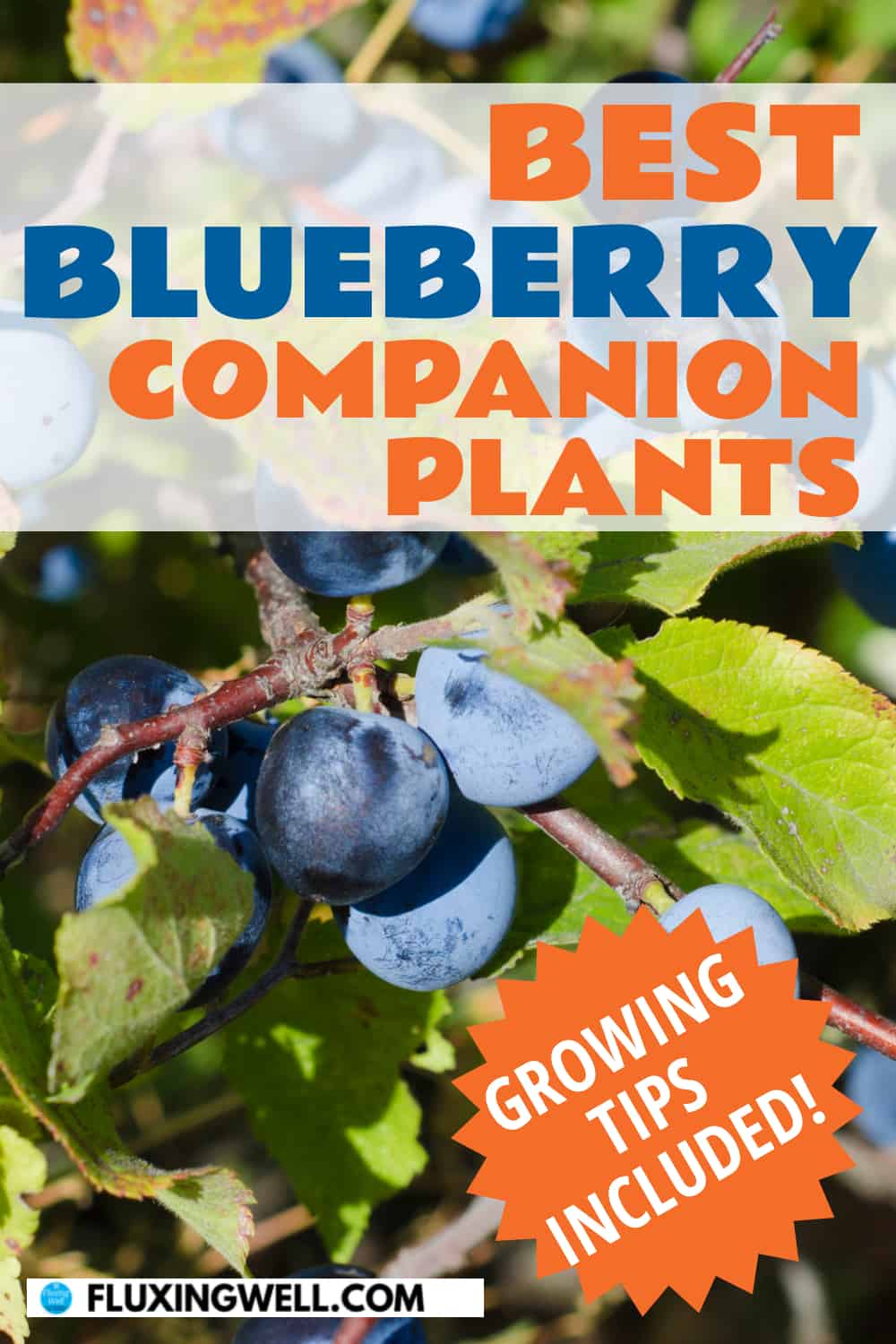


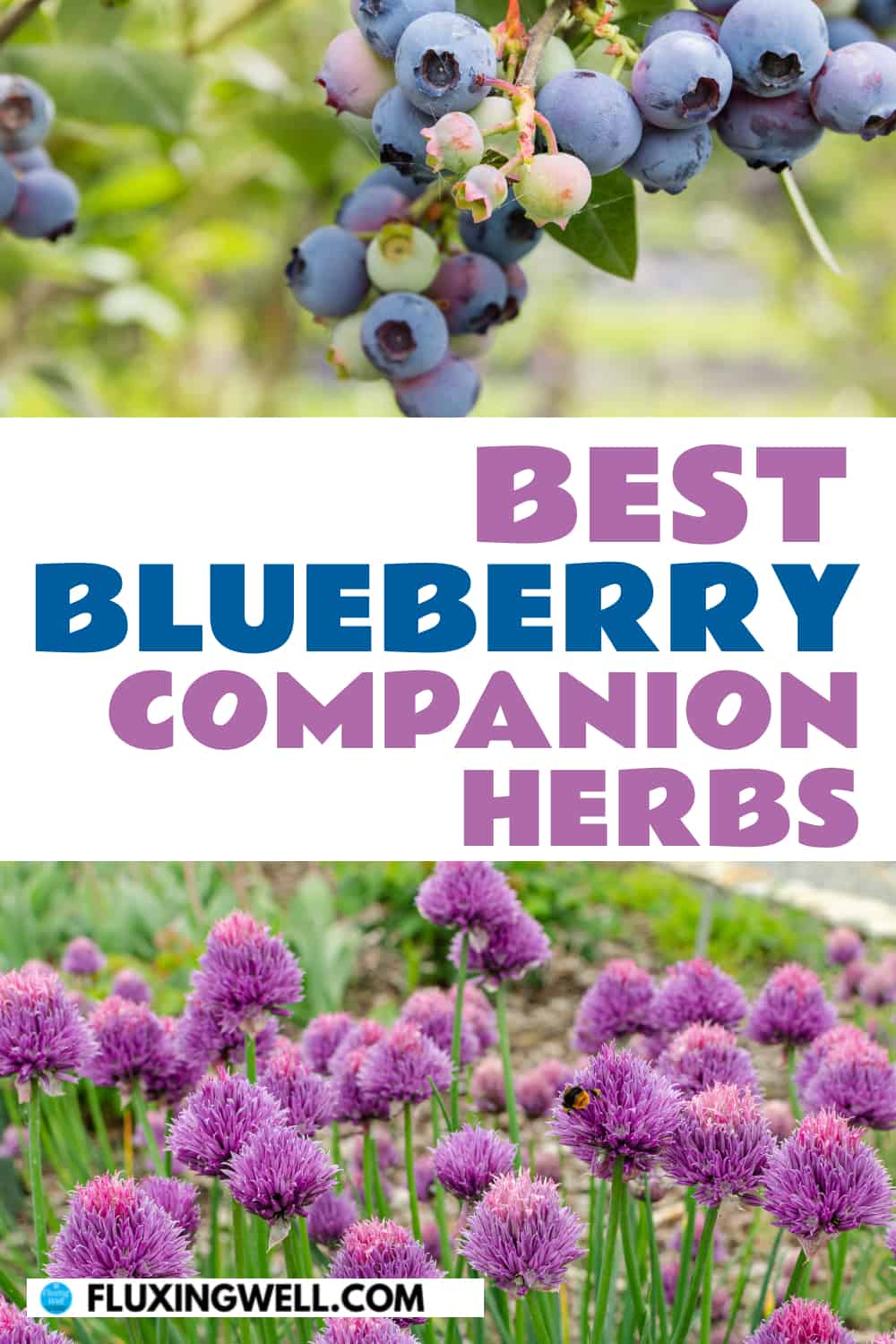

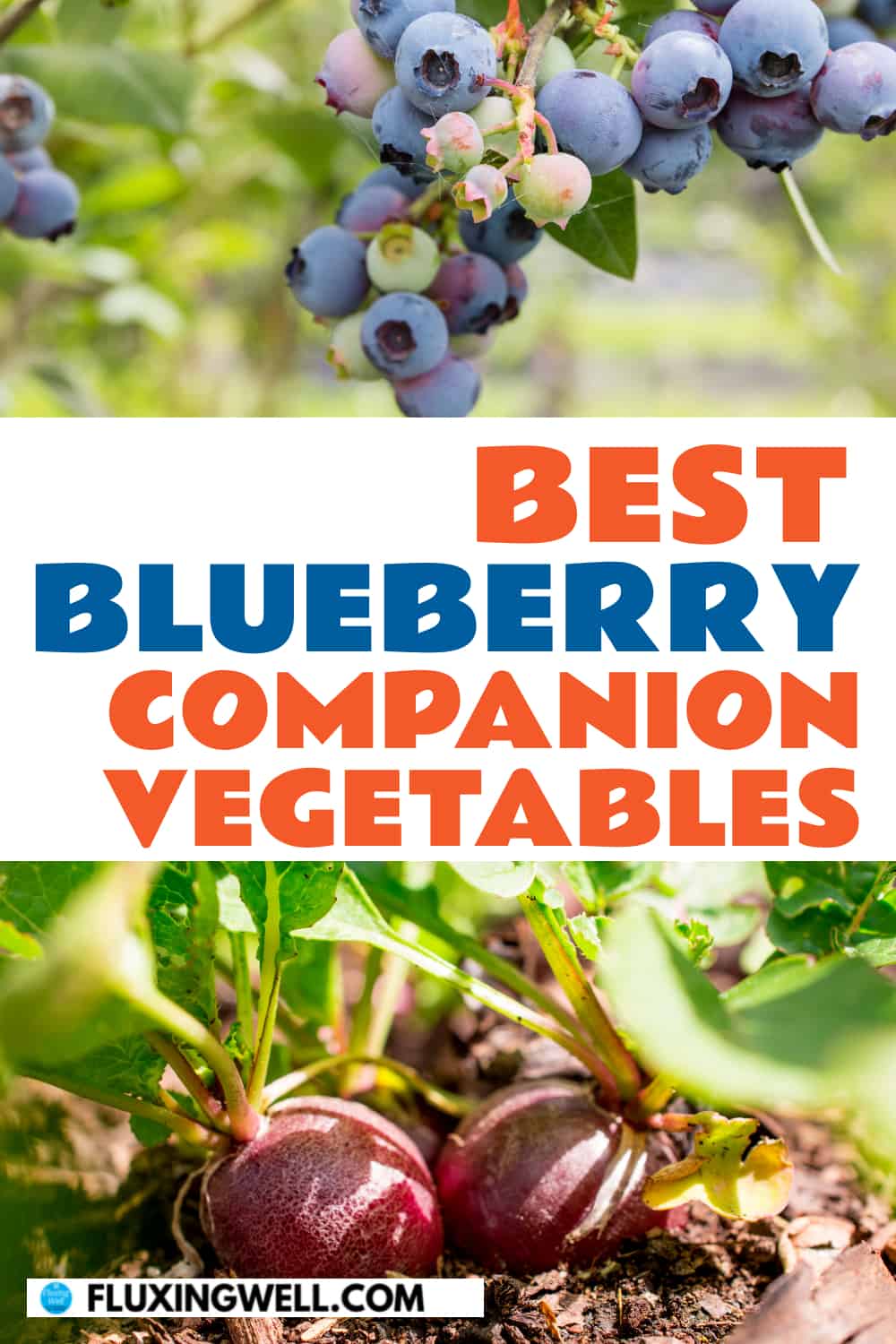

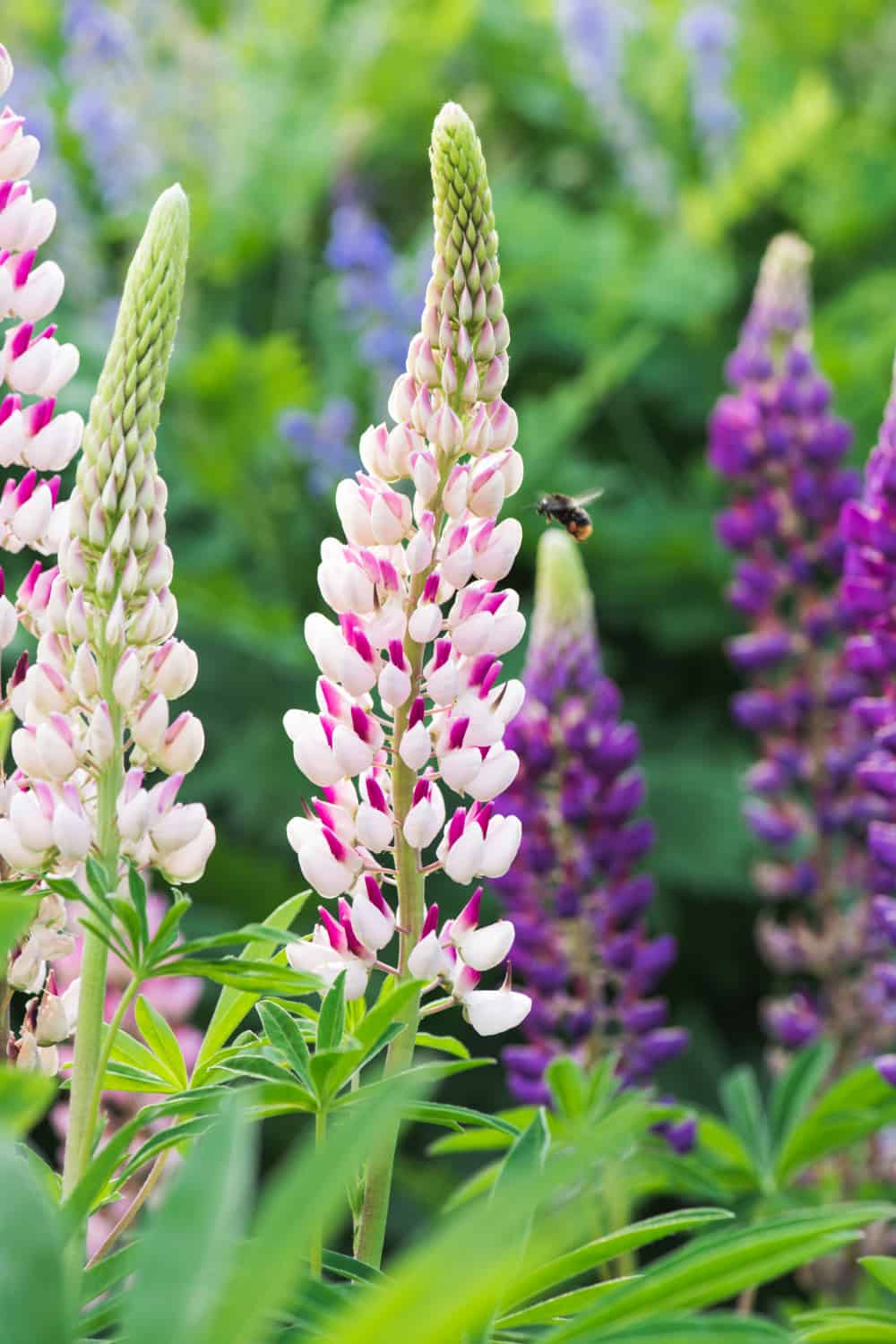
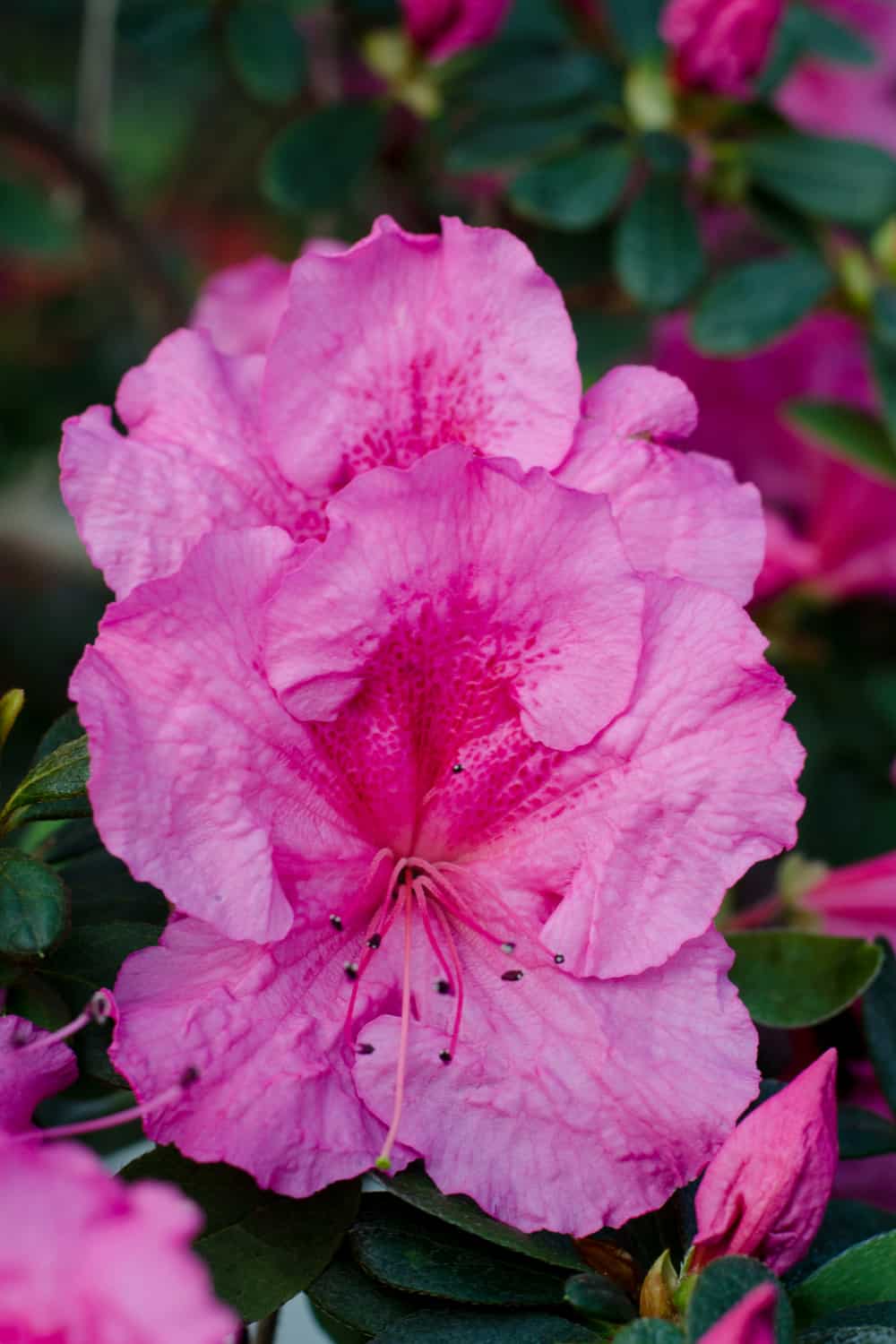
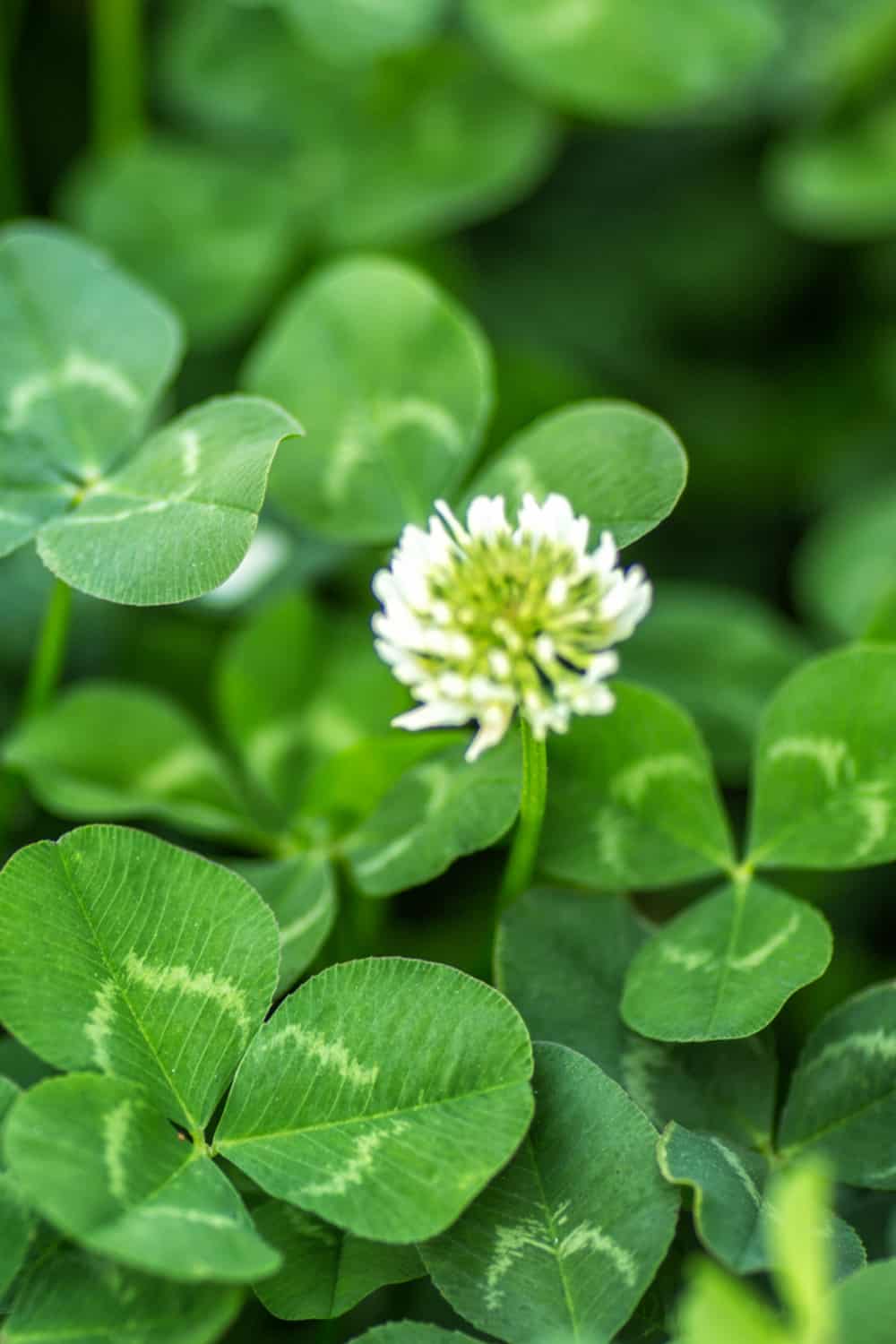
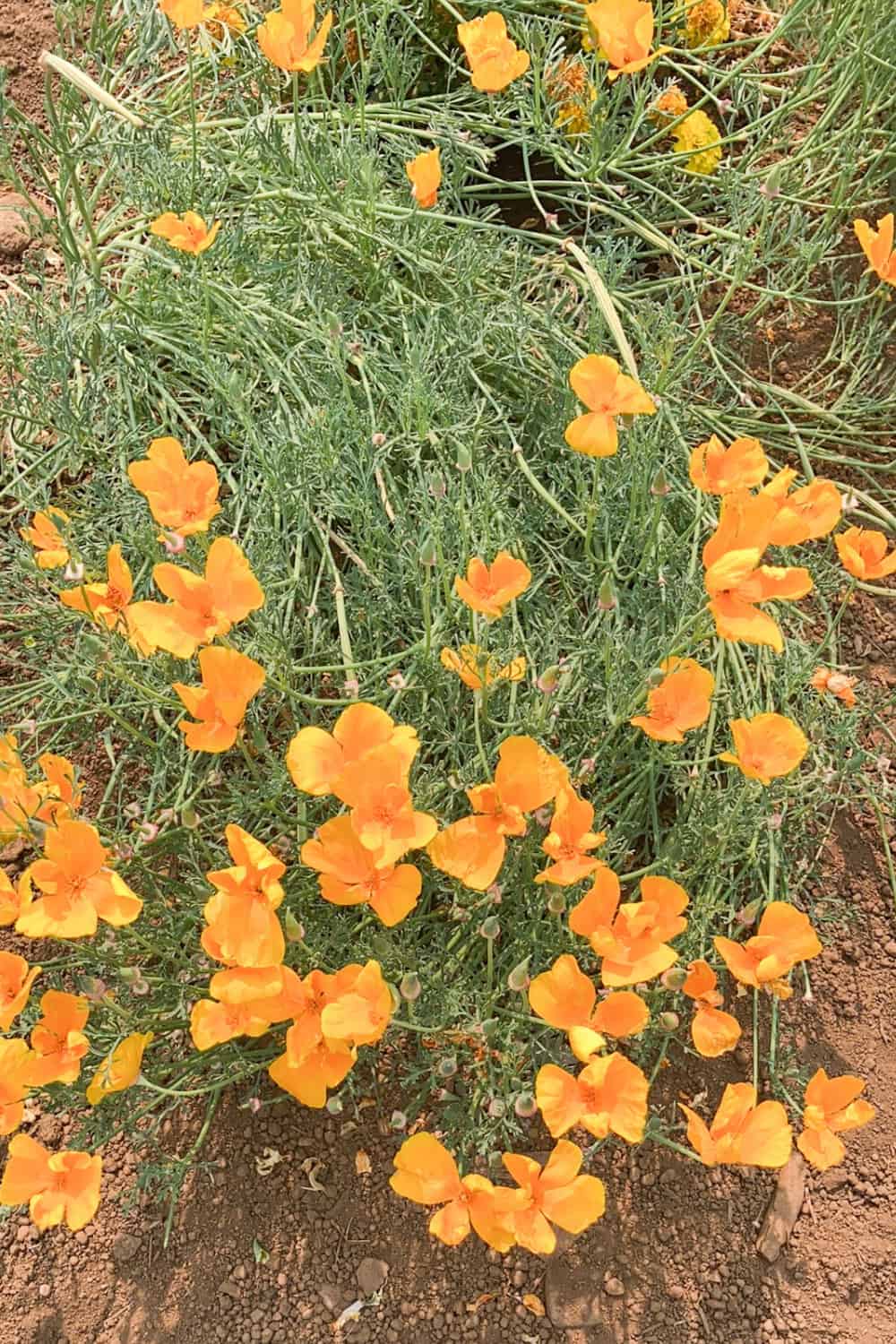




Thanks for the great information about blueberry companion plants! This is so helpful, especially the tips on how to winterize them.
Thank you for the kind words. May all of your blueberry-growing endeavors meet with success!
Thanks for all of the blueberry companion plant ideas. I live in an area where blueberries grow well, and they seem like an easy care plant to grow. Appreciate your chart!
You are most welcome. I could go on and on about blueberries. I am so grateful to have a reliable blueberry crop every year.
I’ve always wanted to have some blueberry plants, but struggle with deer. Your information on the best blueberry companion plants – especially the deer-resistant ones are very helpful. Thank you for the planting time tips as well – I’m inspired to get planting this fall.
I have to put bird netting over my blueberry plants. That really does help. I hope you get to try planting some blueberries with good companion plants!
Thanks for this helpful post about the best blueberry companion plants. I didn’t know that they are so many possibilities. It is also very helpful to know what to avoid. Great ideas for all gardeners!
Thank you! Yes, our blueberry plants require very little maintenance and I am so grateful for the bountiful harvest of blueberries.